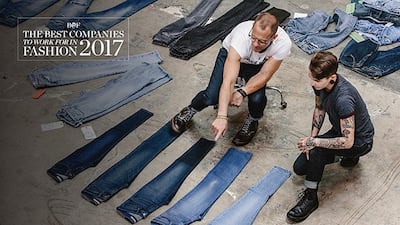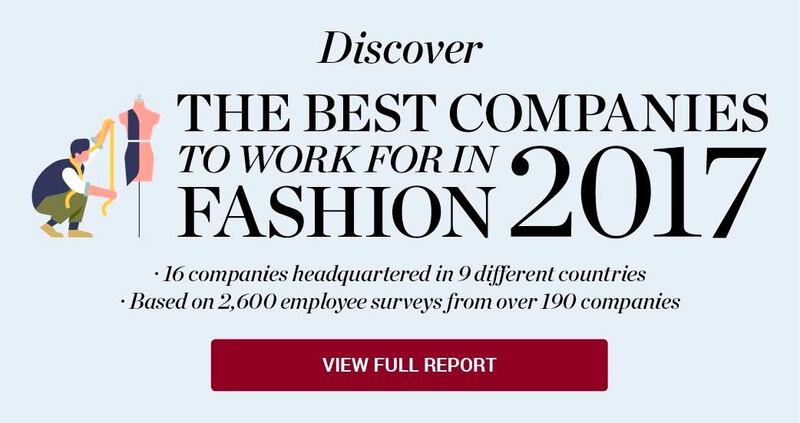
The Business of Fashion
Agenda-setting intelligence, analysis and advice for the global fashion community.

Agenda-setting intelligence, analysis and advice for the global fashion community.

LONDON, United Kingdom — Fashion companies have long relied on the power of their consumer brands to recruit top talent, but in today's shifting job market that approach appears to be increasingly flawed. In BoF's first report on The Best Companies To Work For In Fashion, many of the world's most famous luxury fashion companies failed to make the cut. According to our survey, the reality of working on the inside of some of these revered companies is a far cry from the glossy finish of their consumer brands.
Indeed, the need for fashion companies to review their recruitment and talent strategies has never been more pressing. The global workforce is in the midst of a radical demographic shift. By 2020 millennials are expected to make up the largest portion of the overall working population. To gain a competitive advantage, and attract and retain the best of this new generation of talent, companies must tailor their HR practices to meet and exceed the preferences of millennials, who place far greater emphasis on career development opportunities, transparent leadership and working culture than previous generations.

Levi Strauss & Co. employees | Source: Courtesy
To formulate our report, BoF surveyed more than 2,600 employees working across all aspects of the industry, in more than 190 companies around the world. The data collected spanned three main indicators: rewards and benefits; leadership and development; and working culture and environment.
ADVERTISEMENT
Overall, employees participating in our survey report that the fashion industry is successful at crafting company cultures and working environments, with an overall satisfaction rate of 76 percent. The vast majority of employees say they are part of strong collaborative teams, with a 91 percent satisfaction rate. This is especially positive, because team dynamics play a significant role in company culture, which 41 percent of employees identified as the most important driver for overall job satisfaction.
However, the industry as a whole does not perform as well in another key driver for employee satisfaction: leadership and development. Only 59 percent of employees say they are satisfied with opportunities for training and development, while only 57 percent are satisfied with the levels of transparency around career progression within the company.
This should be a key focus for employers looking to attract and retain top talent. Indeed, our research suggests that the correlation between satisfaction with development opportunities and employee retention is the strongest in the entire survey, and that this correlation is likely to only get stronger as the demographics of the workforce continue to shift.
In order to be named one of the best companies to work for in fashion, a company must have a strong baseline performance in all three indices — and have a clearly identifiable spike in one of these key areas in order to stand out from the competition.
REWARDS AND BENEFITS
Today's best employers offer more than just traditional salaries and benefits. From offering employee share option schemes, such as "Farfetch For All," or Gap Inc.'s evidence-based performance pay scheme, which is linked to measurable business

Zalando employees | Source: Courtesy
performance metrics, the industry’s leading employers have recognised the potential of rewarding employees in ways that go beyond traditional pay ladders.
ADVERTISEMENT
Some companies like Berluti, the French heritage shoemaker owned by LVMH, and Cotton On Group, Australia’s largest value retailer, have seen opportunity in a more holistic approach to rewards and benefits schemes. As well as investing in on-site gyms and health and wellness staff, from osteopaths to personal trainers to yoga instructors, and providing free, nutritious food, these companies have sought to improve the happiness of their employees while they are at work. They encourage employees to have fun at work, providing opportunities to connect with their colleagues and trusting them to manage their own workloads to suit the demands of their personal and professional lives.
LEADERSHIP AND DEVELOPMENT
Keeping pace with evolving reward packages, leading employers are also shifting their attitude towards leadership and development — taking a more nuanced approach to increasing employee productivity and meeting targets. Rather than a biannual review, employees at Gap Inc. have informal monthly one-on-one meetings with managers, designed to create opportunities to learn "from both success and failure." Indeed, employees are now given many more opportunities to impress while learning new skills, rather than being remembered only for their failures.
Some of the most innovative practices in leadership and development now stem from data analysis, through which managers can motivate their staff by tracking the positive impact of their individual output, making individual performance much more measurable. At Farfetch, the leadership team uses regular surveys to keep on top of company culture amidst its fast growth.
CULTURE AND WORKING ENVIRONMENT
Other top companies are focusing on creating opportunities for autonomy, job-fluidity and quick progression. To meet the demands of a young business with €3.6 billion ($3.8 billion) in turnover, German e-tailer Zalando assesses its employees on their overall potential, not their experience, creating team fluidity that can escalate talent to a variety of career paths.
Global mobility is also a key area of focus. At Adidas, employees take part in a regular exchanges between local market talent and global talent, just as H&M champions the global mobility of its employees.
As the fashion industry continues to be disrupted by globalisation and technological change, these are the companies equipped with the imagination and conviction to win the war for top fashion talent. Here, we explore their relative strengths and understand the impact of their people strategies in the words of their own employees.
Click here to read BoF's first annual report on The Best Companies To Work For In Fashion.

Discover the most exciting career opportunities now available on BoF Careers — including jobs from Hugo Boss, Banana Republic and House of CB.
To provide actionable insights and inspiration on how fashion and retail industries can further embed diversity, equity and inclusion in the workplace and business strategies today, BoF Careers co-hosted a panel discussion with The Outsiders Perspective. Now, BoF shares key learnings from the panel.
A US regulator has banned most uses of the clauses, which started as a way for fashion companies to prevent senior executives from walking off with trade secrets, but have become a standard retention tool.
Check out this week’s new partners and openings on BoF Careers, the global marketplace for fashion talent.